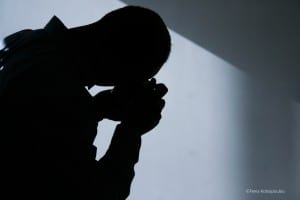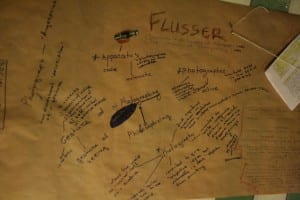Origin: early 17th century: Latin, from apparare ‘make ready for’, from ad- ‘towards’ + parare ‘make ready’.
Apparatus:
- is an object which makes itself ready for something: predatory characteristic.
- informs the object
- simulate human organs
- have resource to science
- people act as function of them
- there are intentions hidden within it
- it is a toy that simulates thought and is so complex that the person playing with it cannot comprehend it; What make the camera becoming a game is the program, the software. The apparatus hols power over the photographer: it programs his gestures. “A philosophy of photography must reveal the fact that there is no place for human freedom within the area of automated, programmed, and programming apparatuses, to show a way in which it is nevertheless possible to open up a space for freedom.”
- what the photographer does is to look for information to be realized in a photograph; he tries to find hidden or undiscovered virtualities in the camera program that enables him to find a new information; he is within the camera.
Before the industrial revolution the man was surrounded by tools which worked in function of him; after the industrial revolution the tools that become machine are in the center surrounded by men who works in function of the machine. Therefore we have a new relationship where man and apparatus form a single form – unit. Indeed Flusser never separates a writer from the typewriter, a painter from the brush and canvas, or a photographer from the “apparatus.” Ever the phenomenologist, he is unwilling to separate an object from the consciousness that intends it. He observes the movement — in this case the movement of a photographer around a human subject — as a dynamic interplay between subject and object. He arrives at the conclusion that photographing is a way philosophising, without language. (http://www.nancyannroth.com/?p=214)
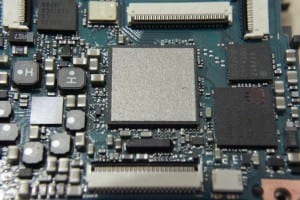
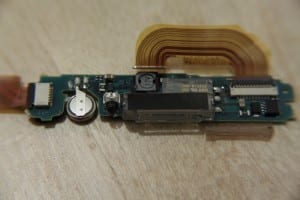
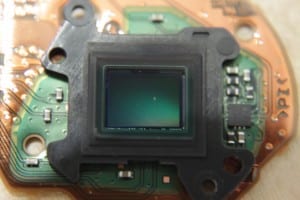
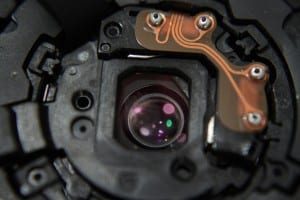
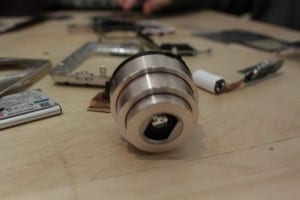
IV. GESTURE OF PHOTOGRAPHING
Photographing for Flusser is the gesture that allows to the person to search for undiscovered possibilities within the camera program, to look for images as yet unseen, for informative, improbable images. (p.26). At least he speaks about this kind of photographing.
Photographing : Hunting: the gesture of taking photo is like the gesture of hunting, where the photographer and the camera function a single unit. The gesture aims to find new unseen situations; it is a post-industrial gesture ( post-ideological and programmed)
While hunting, the photographer moves from one space-time category to another, and he combines the various space- and-time categories while on the move. His hunt is a game of combining the space-time categoreis of teh camera, and what we see when we look at a photograph is precisely the structure of that game, not the structure of the photographer’s cultural condition- at least not immediately. (p.24)
It looks like that the photographer is free to make choices but according to Flusser, that his intention is linked and functions according to the camera’s program: programmed freedom.Within the gesture of taking a photo, the camera does what the photographer wants and s/he does what the camera is programmed to do.
The photographer needs to manipulate and regulate the camera – “conceptual” gesture >linear thinking. He must translate his concept into the camera’s program>photo=image of concepts.
Photographing is
anti-ideological : it search for many different points of view.
programmed action: post- industrial act.
The final decision is required by the photographer who pushes the button.
VII. The reception of Photography
Today everyone ones a camera and makes pictures. Even if they are built according to complex scientific and technological principles, they are quite easy to use. HE who holds the camera can make excellent photo without being aware of the inner complexity of the camera and the process occurred after pressing the shutter release.
The distinction between and amateur and true photographer is that the first doesn’t seek to make “new” moves/photos and to produce information that is not seen before ; s/he will prefer using the automatic procedures that the camera offers in order to enjoy making snapshots; s/he produce redundant pictures: photographic mania – eternal reproduction of sameness/similarity- addiction-obsession; s/he is devoured by the camera, and he becomes the camera’s extended automatic shutter release. His behavior is an automatic function of the camera itself. p.42). Production of memory and not of information.
The true photographer is interested in finding new ways of seeing and producing new informative situations.
In the past text explained images. In the post-industrial age happens the opposite: photograph illustrates i.e. newspapers article.
Now is the image that dominates.






